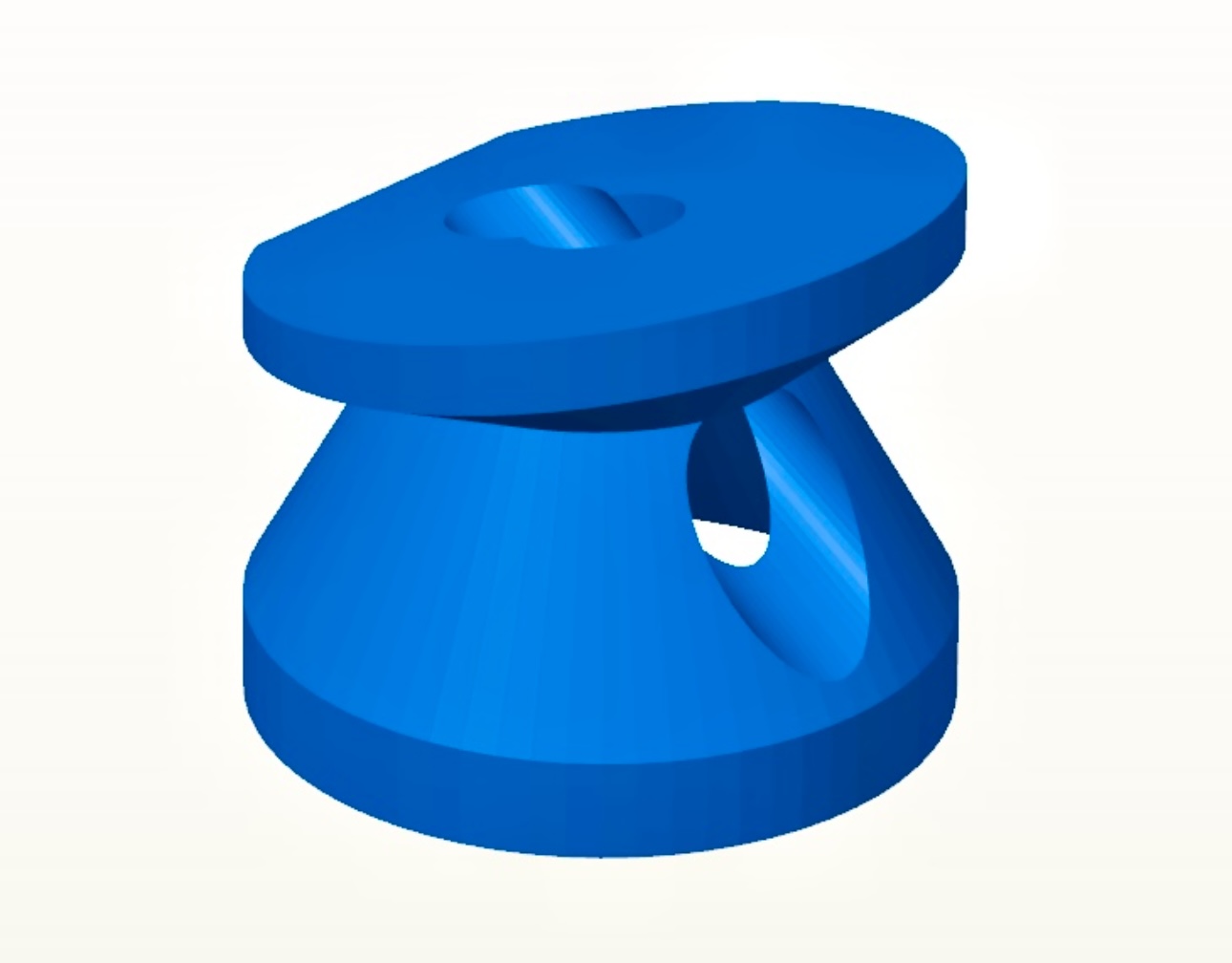The baffles have been the core of this project, both literally and figuratively. Developing a baffle that does not deform in heat, while being made in a heat-sensitive material has been a challenge.
The FTN.3 baffle (AKA the slanted K baffle) was found to be a very heat resistant design. In a traditional cone shape, the apex of the cone tends to deform when the material is heated and softened. The K baffle resists this, because the apex of the cone is tethered to the walls of the can. As the material is heated up and softened, it resists permanent deformation because it is tethered to the walls.
Adding a slant to the face distributes the load along multiple layer lines. Adding a clipped edge helps trick the expanding gas into the secondary/false chamber.
 This type of baffle design works very well with slow moving gasses (rimfire, pistol calibers, subsonic 300blk). However in fast moving gasses, K baffles do not work as well because the gas tends to "skip" or bypass the false chamber.
This type of baffle design works very well with slow moving gasses (rimfire, pistol calibers, subsonic 300blk). However in fast moving gasses, K baffles do not work as well because the gas tends to "skip" or bypass the false chamber.
To address this, the FTN.4 baffle retains the apex-tethering features, but has many holes to allow the fast moving gas to pass through. Even though this creates a complex looking design, it is fundamentally just a cone (proven to work very well with rifle rounds), with suspension struts supporting the apex.
In the most recent models, rifle caliber suppressors feature the FTN.4 baffles, and the pistol and rimfire calibers feature the FTN.3 baffles.